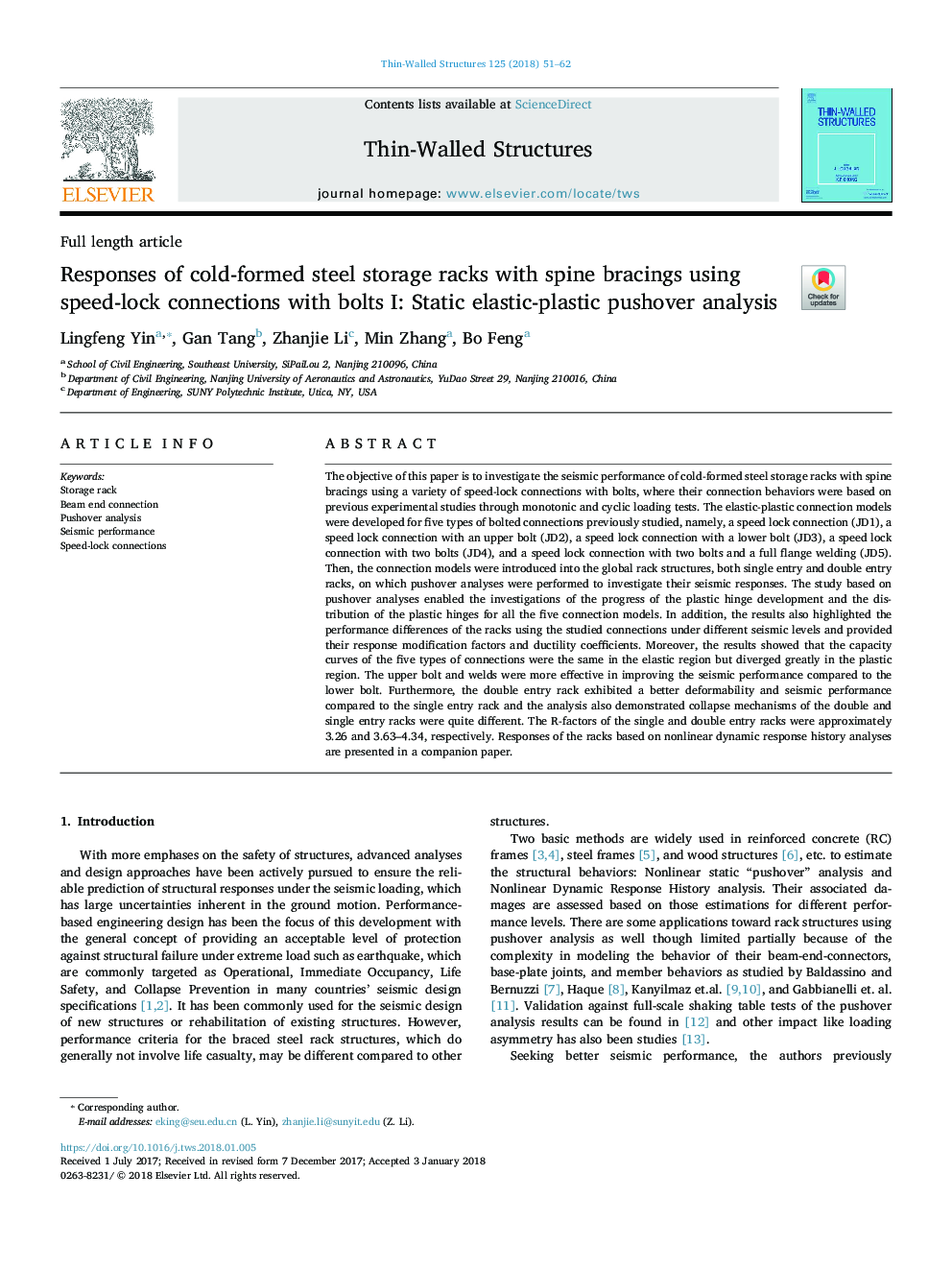| Article ID | Journal | Published Year | Pages | File Type |
|---|---|---|---|---|
| 6778009 | Thin-Walled Structures | 2018 | 12 Pages |
Abstract
The objective of this paper is to investigate the seismic performance of cold-formed steel storage racks with spine bracings using a variety of speed-lock connections with bolts, where their connection behaviors were based on previous experimental studies through monotonic and cyclic loading tests. The elastic-plastic connection models were developed for five types of bolted connections previously studied, namely, a speed lock connection (JD1), a speed lock connection with an upper bolt (JD2), a speed lock connection with a lower bolt (JD3), a speed lock connection with two bolts (JD4), and a speed lock connection with two bolts and a full flange welding (JD5). Then, the connection models were introduced into the global rack structures, both single entry and double entry racks, on which pushover analyses were performed to investigate their seismic responses. The study based on pushover analyses enabled the investigations of the progress of the plastic hinge development and the distribution of the plastic hinges for all the five connection models. In addition, the results also highlighted the performance differences of the racks using the studied connections under different seismic levels and provided their response modification factors and ductility coefficients. Moreover, the results showed that the capacity curves of the five types of connections were the same in the elastic region but diverged greatly in the plastic region. The upper bolt and welds were more effective in improving the seismic performance compared to the lower bolt. Furthermore, the double entry rack exhibited a better deformability and seismic performance compared to the single entry rack and the analysis also demonstrated collapse mechanisms of the double and single entry racks were quite different. The R-factors of the single and double entry racks were approximately 3.26 and 3.63-4.34, respectively. Responses of the racks based on nonlinear dynamic response history analyses are presented in a companion paper.
Keywords
Related Topics
Physical Sciences and Engineering
Engineering
Civil and Structural Engineering
Authors
Lingfeng Yin, Gan Tang, Zhanjie Li, Min Zhang, Bo Feng,
